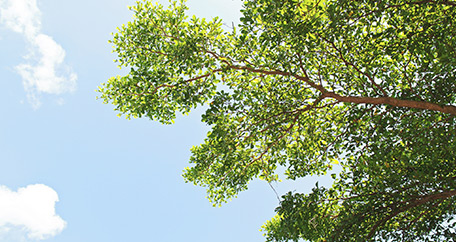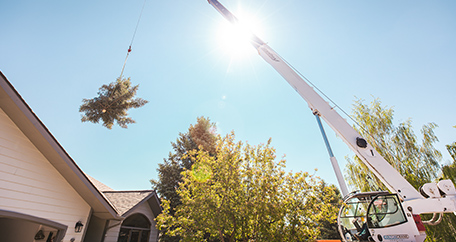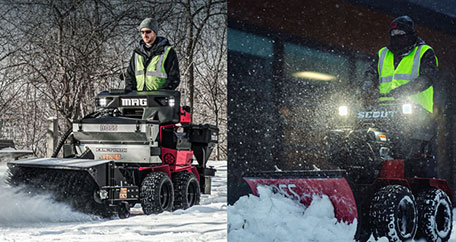Bozeman, Montana, is home to a rich variety of trees that add beauty, shade, and character to neighborhoods and landscapes. From towering Douglas firs to graceful aspens, trees are a defining feature of the Gallatin Valley. Yet, like all living things, trees face challenges, from harsh winters to pests, that can affect their health and stability.
One of the most important steps in caring for your trees is knowing when they need attention. A tree health evaluation provides a comprehensive look at a tree’s condition, but how do you know when it’s time to schedule one?
This guide explores the most common warning signs that indicate your trees may need a professional health check.
Why Knowing the Signs Matters
Trees rarely fail without warning. More often, they display subtle changes that point to underlying stress, disease, or structural instability. Recognizing these early signs is critical because:
- It can prevent hazards like falling limbs or tree failure.
- It helps preserve the tree before problems become irreversible.
- It can save money by avoiding costly removals or emergency services.
In a climate like Bozeman’s, where winter storms, drought, and local pests are common, early detection is especially important.
Signs You Need a Tree Health Evaluation
Here are the primary symptoms that suggest a tree could benefit from a professional assessment:
1. Discolored or Prematurely Falling Leaves
If your tree’s leaves are turning yellow, brown, or red outside the normal seasonal cycle, it may be under stress. Premature leaf drop often signals drought stress, nutrient deficiency, or disease.
2. Sparse or Bare Branches in the Canopy
When parts of the canopy appear thin or fail to leaf out in spring, it can indicate that sections of the tree are no longer receiving adequate nutrients. This is often tied to root damage, pests, or disease.
3. Cracks, Cavities, or Peeling Bark
Deep cracks in the trunk or bark peeling away from the wood can weaken a tree structurally. Cavities may also signal internal decay, even if the outside of the tree still looks healthy.
4. Fungal Growth at the Base
Mushrooms or conks growing near the trunk or roots are a strong indicator of internal decay or root rot. While fungi can live on decaying organic matter without harming the tree, their presence near the trunk should not be ignored.
5. Excessive Insect Activity
Bore holes in bark, piles of sawdust, or a sudden influx of beetles may point to an insect infestation. In Montana, bark beetles are a common concern and can quickly compromise conifers if not addressed.
6. Dead or Hanging Branches
Deadwood within the canopy is not only a sign of declining health, but it also poses a safety hazard. Limbs weakened by disease or age can fall suddenly, especially during Bozeman’s strong winds or heavy snow.
7. Noticeable Leaning or Soil Disturbance
A tree that suddenly begins to lean, or soil that appears heaved or cracked around the base, could signal root instability. This condition makes the tree more likely to fall during a storm.
8. Reduced Growth or Small Leaves
If annual growth is less than expected or leaves appear unusually small, the tree may be experiencing long-term stress. This could stem from poor soil conditions, competition, or hidden disease.
Other Common Concerns in Bozeman
Beyond the visible signs above, trees in Bozeman often face challenges such as:
- Winter injury from ice and snow loads.
- Drought stress during dry summers.
- Fungal diseases like powdery mildew or root rot occur in damp conditions.
These issues may not always be obvious at first, which is why consistent observation is key.
What to Do If You Notice These Signs
If you see one or more of the warning signs listed above, the next step is to schedule a professional tree health evaluation. Certified arborists are trained to:
- Diagnose pests, diseases, and nutrient deficiencies.
- Assess structural risks that could endanger property or people.
- Recommend treatments such as pruning, soil care, or pest management.
- Determine whether a tree can be preserved or if removal is the safest option.
Even if the tree doesn’t require immediate intervention, an evaluation provides peace of mind and a plan for long-term care.
Supporting Tree Health Year-Round
While professional assessments are vital when problems arise, homeowners can support tree health by:
- Watering deeply during dry spells.
- Adding mulch around the root zone (but not against the trunk).
- Pruning properly to maintain structure and remove deadwood.
- Avoiding damage to roots or bark from equipment.
- Monitoring trees regularly for changes.
These simple steps reduce stress and keep trees better prepared to withstand Bozeman’s challenging climate.
Contact Us to Schedule Our Tree Services for Your Property in Bozeman, MT
Trees are an important part of Bozeman’s landscape, but keeping them healthy and safe takes regular attention. Spotting issues early, like dead branches, fungal growth, or structural damage, can make all the difference in protecting both your property and your trees.
Our team provides a full range of tree care services in Bozeman, MT, including tree pruning, tree removal, and stump grinding, to keep your landscape looking its best. Whether you’re worried about a tree’s health, need to clear a hazardous stump, or simply want to improve the appearance of your yard, we’re here to help. Contact us today to schedule any of our tree services.


